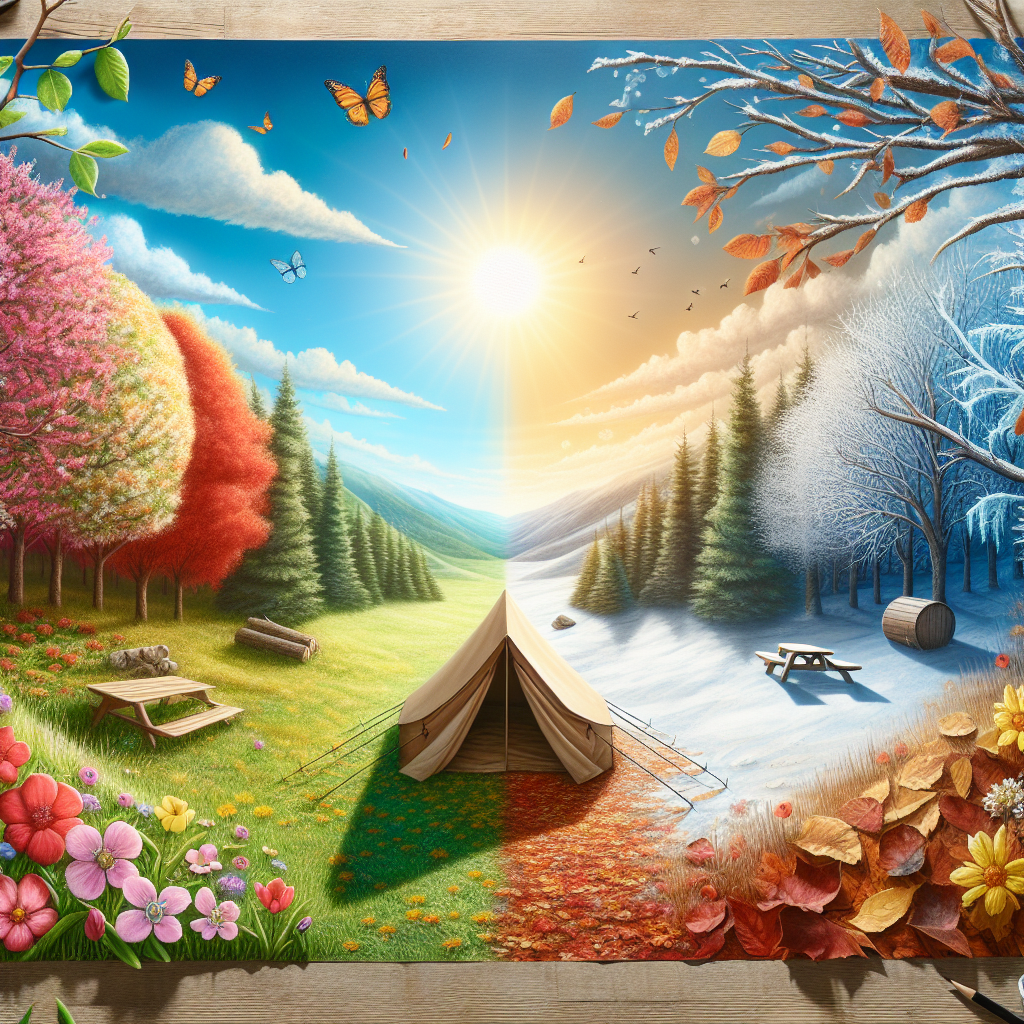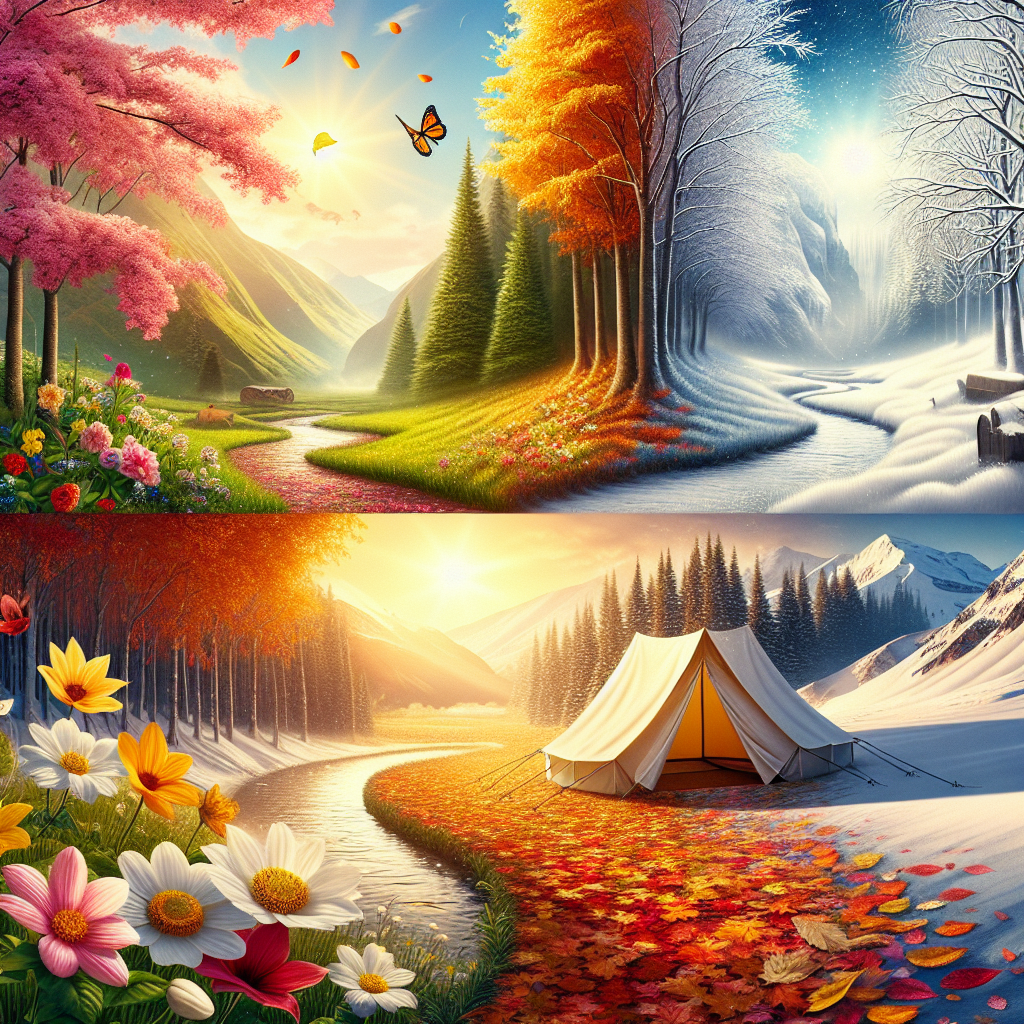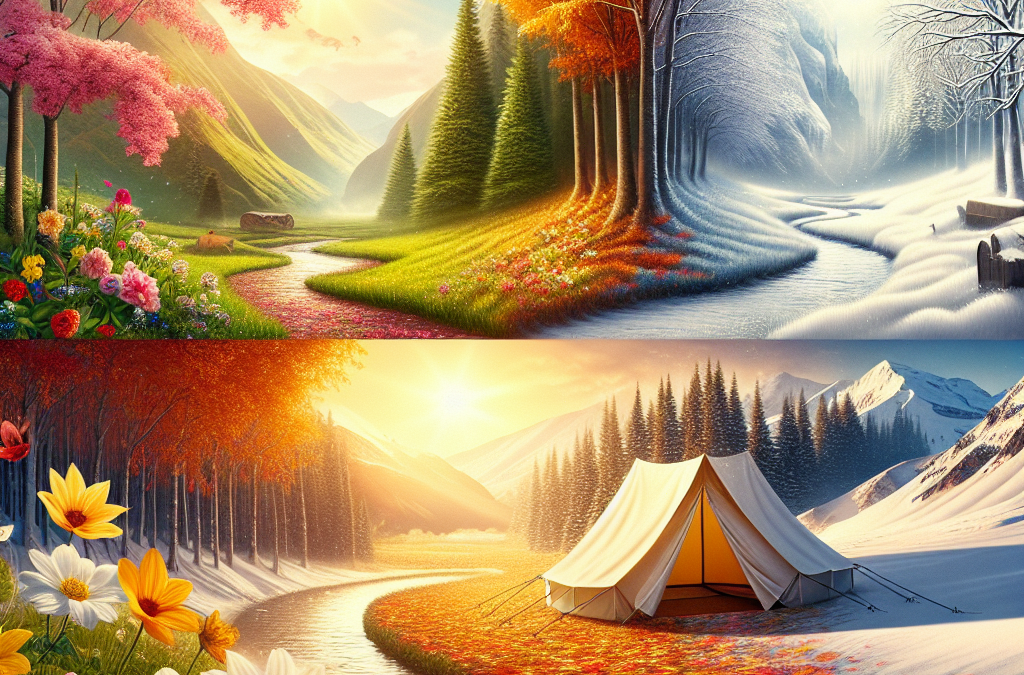Venturing into the untouched splendor of nature under the open sky, afire with stars, is an experience you’ll find transformative and deeply fulfilling. As part of the TrailTrekTribe, you’re about to embark on an extraordinary journey – ‘Seasonal Camping: What To Expect Each Season,’ your comprehensive guide to exploring the great outdoors and experiencing its breathtaking beauty, season by season. Whether you’re a seasoned adventurer or a novice camper, this tailored guide illuminates how each season paints the wilderness in unique hues and offers distinct adventures and challenges. From spring’s blossoming splendor to winter’s stark beauty, join us in embracing the thrill of each season’s unique offerings. Get ready to find your tribe, step into the wild, and unleash the raw, exhilarating freedom that only nature can offer.

Understanding Seasonal Camping
Seasonal camping refers to camping activities where you adjust your camping style, gear and locations according to the change of seasons. It’s a flexible way to experience the great outdoors, allowing you to immerse yourself in the beauty and diversity that each season has to offer.
Definition of Seasonal Camping
Seasonal camping involves staying in a campground or park for an extended period of time, usually a season or longer. It’s ideal for you if you want to deepen your connection with nature, enjoy different outdoor activities and fully savour the unique sights, sounds and experiences each season brings.
Benefits of Seasonal Camping
The benefits of seasonal camping are manifold. Besides providing an escape from everyday life, it helps you rejuvenate, connect with nature and embrace inner peace. It also differs from regular camping in that it allows you to explore and appreciate the subtle changes in your surroundings as the season shifts.
Important Considerations for Seasonal Camping
Seasonal camping does require some careful planning and preparation. The choice of camping gear, clothing, food and activities will all be influenced by the season. Paying attention to weather conditions, vegetation, wildlife and daylight hours is crucial for a safe and enjoyable camping experience.
Spring Camping
Characteristics of Spring Camping
Spring camping is characterized by blossoming plants, warmer days, and occasional showers. The ambience is serene, invigorating, and filled with the sounds of nature awakening from winter. You may still encounter unpredictable weather, so be prepared for sudden rain or late-season snow.
Recommendations for Spring Camping Gear
Your essential gear for spring camping should include waterproof and breathable clothing, a sturdy tent that can withstand wind and rain, appropriate sleeping system, and possibly a rainfly or tarp. A portable stove for cooking is also important as wet conditions may make campfires difficult.
Best Spring Camping Locations
The best spring camping locations offer a blend of adventure, natural beauty, and fascinating wildlife. Some great options could be national parks, such as Yosemite National Park for its waterfalls or the Great Smoky Mountains for its beautiful wildflower blooms. Always research beforehand to find a location that suits your adventurous spirit.
Summer Camping
Characteristics of Summer Camping
Summer camping brings longer days and warm temperatures. It’s the most popular camping season due to school vacations and pleasant weather. Lakes and beaches become popular destinations for cooling off and enjoying watersports.
Recommendations for Summer Camping Gear
Your summer camping gear should include lightweight clothing, a cooler for food and drinks, sunscreen, insect repellent, and a good quality tent with proper ventilation. Don’t forget a sleeping bag suitable for warm temperatures and a comfortable camping chair for those long summer evenings.
Best Summer Camping Locations
The best summer camping locations offer a mix of sunny relaxation and exploratory adventure. Lake District in U.K., Acadia National Park in the U.S., or the Bay Of Fires in Tasmania, Australia are some fantastic choices. However, your ideal spot greatly depends on the activities you enjoy.
Fall Camping
Characteristics of Fall Camping
Fall camping is marked by cooler temperatures, changing leaves and fewer crowds. It’s an ideal time for hiking and photographing nature’s dramatic color changes. The nights can get chilly, so make sure you’re prepared.
Recommendations for Fall Camping Gear
Your fall camping gear should include layers of clothing, allowing you to add or remove layers as temperatures fluctuate. A well-insulated sleeping bag, a tent that can handle frost and perhaps a portable heater can be useful. Don’t forget to pack rain gear, as showers are common in fall.
Best Fall Camping Locations
The best fall camping locations will give you spectacular views of fall foliage. This includes destinations such as Shenandoah National Park in U.S., Algonquin Park in Canada or the Highlands in Scotland. Each of these places offer beautiful hiking trails, stunning vistas and interesting wildlife.

Winter Camping
Characteristics of Winter Camping
Winter camping offers a unique adventure with snow-covered landscapes, quiet spaces, and brilliant stars. However, it’s also challenging with sub-zero temperatures, limited daylight, and potentially dangerous weather conditions.
Recommendations for Winter Camping Gear
Winter camping requires gear designed to withstand extreme weather conditions. Insulated clothing, a four-season tent, a sleeping bag rated for low temperatures, and a reliable heat source are vital. Snowshoes or skiing gear can also enhance your winter camping experience.
Best Winter Camping Locations
The best winter camping locations offer breathtaking snow-filled landscapes and opportunities for winter activities. Lapland in Finland, the Rocky Mountains in Canada, or Mount Hood National Forest in U.S. are all recommended.
Preparing for Different Seasons
Necessary Preparations for each Camping Season
As each season brings different conditions, it’s important to plan and pack accordingly. Keep an eye on the weather forecasts, study the terrain, and always carry season-specific gear.
Season-Specific Camping Skills to Master
Knowing how to set a shelter, start a fire, cook outdoors, and apply basic first aid are skills valuable in any camping season. However, skills like navigating in snow, recognizing signs of heatstroke or hypothermia, and knowing how to repel insects could be vital in specific seasons.
Tips for Seasonal Campsite Selection
Choosing the right campsite is key to a successful camping trip. Always look for sites that offer shelter from the elements, have a reliable water source nearby, and where you can minimize your impact on the environment.
Seasonal Weather Conditions and Their Impacts
Understanding Weather Patterns
Knowing what weather to expect will help you plan your camping trip more effectively. Familiarize yourself with the specific weather patterns of your chosen destination including rainfall frequency, average temperatures, daylight hours, and seasonal storms.
Weather-Related Camping Risks
Each season has its weather-related risks. These could include dehydration in summer, frostbite in winter, or lightning during stormy weather. Understand these risks and how to mitigate them to ensure your safety.
Weather Prep and Safety Tips
Invest in a good quality weather-resistant tent, bring suitable clothing layers, hydrate often, and take shelter during extreme conditions. Always inform someone about your camping plan and estimated return time.
Sustainable Camping Practices by Season
Environmental Impact of Camping
Camping can have a significant environmental impact if not done responsibly. Seasonal changes may increase these impacts, for instance, unmanaged campfires can cause forest fires in summer, while off-trail hiking in spring can harm newborn plants and nesting birds.
Season-Specific Sustainability Measures
Adopting sustainable practices ensures the preservation of natural beauty for future generations. Use designated campsites, stick to trails, avoid disturbing wildlife, and always pack out what you pack in.
Leaving No Trace: Individuals’ role in preserving nature
Every camper has a role to play in preserving nature. The Leave No Trace principles should guide you to minimize your footprint during your camping adventure in every season.
Wildlife and Seasonal Camping
The Impact of Seasons on Wildlife
Stay informed about the species around your campsite as wildlife behavior changes with the season. Knowledge about nesting seasons, hibernation periods, and feeding patterns can enhance your experience and keep you safe.
Safety precautions around wildlife
Never feed wildlife, keep your distance, and store food securely. Be aware of the high-activity periods for different species to prevent unwanted encounters.
Season-specific wildlife to observe
Each season brings different wildlife opportunities. From bird watching in the spring, reptile spotting in the summer, to tracking animal prints in the snow in winter, your camping trips can be enriched by these interactions.
Making the Most of Seasonal Camping
Maximizing your Camping Experience Across Seasons
To maximize your seasonal camping experience, learn new outdoor skills, join a camping community, like our Tribe, share stories, and exchange advice.
Sharing and Learning from Campers’ Experiences
Every camper has unique experiences to share. By hearing about others’ adventures, you can gain insights for your future trips. At TrailTrekTribe, we foster such an environment for campers to connect and learn.
Seasonal Camping: A lifetime of Adventure
Seasonal camping offers a lifetime of adventures, as you enhance your survival skills, immerse yourself in nature’s varying moods, and form lasting connections. Whether you’re a seasoned outdoor enthusiast or a beginner, every season presents its own unique charm and challenge. And remember, no matter the season, nature is always in season at TrailTrekTribe.

